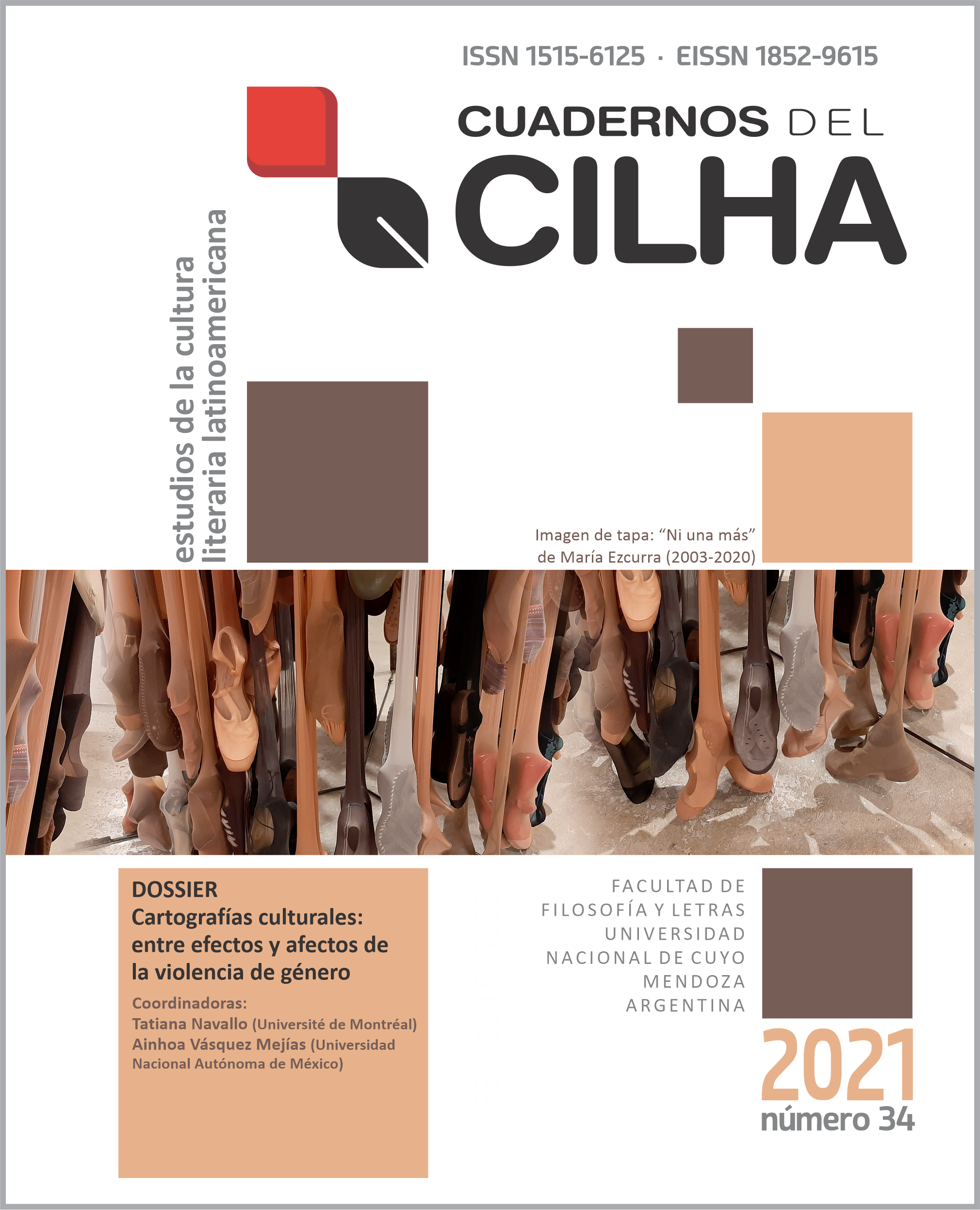Techno-kitsch.
Vogue, violence and the night at House of Apocalypstick
DOI:
https://doi.org/10.48162/rev.34.010Keywords:
Vogue, Tecno-kitsch, Feminist praxis, Night performance, MexicoAbstract
Who can inhabit the night? What kinds of senses and affects shape queer and trans of color nightlife? How do we deal with the force of violence when the sun goes down in a country like Mexico? Queer and trans visibility in Mexico City have generated a great academic interest, shaping research agendas, theories and interventions that sustain an impetus for categorization, and for the production of a genealogy of sexual and gender dissidence in the Americas. However, the matrix that informs such knowledge formations are enmeshed within a Western rationality that responds to a classed and racialized elitism of academic institutions. The knowledge of the night, which revolves around issues of corporeality, materiality and affectivity, etc., of sexual and gender dissident collectivities, also self-called transmarilenchas, informs a larger feminist praxis around affect, pleasure and care. The g-local expansion of neoliberalism over the Mexico City translates into complex processes of gentrification, privatization and commodification of public spaces that support queer and trans of color nightlife. These neoliberal moves toward a “productive” citizenry are further complicated by the necropolitical machine of the 21st century, the state-church-narcocorporation. In this sense, how does violence shape queer and trans night sensibilities? Despite the necroliberal violence of recent years, sexually dissident groups have insisted on a decorporalization of violence through movement, reclaiming values of femininity, and thus challenging the andropatriarchal borders that exclude the night’s affects from the body. At the intersection of performance and affect, this article deals with the cultural practices of House of Apocalipstick, a dance collective composed of trans women and men, lesbians, queens, transvestites, drag queens and kings who practice voguing. In particular, I tease out “the ethics of aesthetics” that stands out in the novel Such is Life in Banana Republic(2014) written by the house mother Franka Polari, as well as in the vogue performance of documentary House of Apocalipstick (2015). Beyond challenging traditional forms of writing, literality and capture, the fusion between body, music and movement plays with transtemporal/transregional affects of voguing, whose origins date back to Harlem’s trans/queer counterculture in the 80s. House of Apocalipstick thus exposes a feminine-affective kinesthesis around voguing that, anchored in nightlife, emerges as a bodily twist to mediate the consequences of daily violence, reclaiming other ways of feeling nighttime pleasures from a feminist praxis referred as techno-kitsch.
References
Blanco, J. J. (1981). Función de medianoche. Ensayos de literatura cotidiana. Ediciones Era.
Capital LGBTTTI (2019). Guía de la Diversidad en la Ciudad de México. Gobierno de la Ciudad de México.
Cornejo, G. (2019). Travesti Dreams Outside in The Ethnographic Machine. GLQ: A Journal of Gay and Lesbian Studies, 25 (3), 457-482.
Guattari, F. y Rolnik, S. (2015). Micropolítica: Cartografía del deseo. Casa de las Américas.
Eng, D. L., Halberstam, J., Muñoz, J. E. (2005). Introduction: What’s Queer About Queer Studies Now? Social Text, 23 (3-4), 1-17.
Emmelhainz, I. (2016). La tiranía del sentido común: La reconversión neoliberal de México. Paradiso.
Feliciano, O. (2014). Such is life in Banana Republic. Ediciones del Apocalipstick.
González Rodríguez, S. (2014). Field of Battle. MIT Press.
Hamera, J. (2007). Dancing Communities: Performance, Difference, and Connection in the Global City. Palgrave Macmillan.
[Knowing Canal]. (2015, septiembre 9). House of Apocalipstick. [video]. YouTube. https://www.youtube.com/watch?v=Nh90YJHa0sI
Llamas, R. (1998). Teoría torcida. Siglo XXI.
Livingston, J. (1990). Paris Is Burning. [DVD]. Off-White Productions.
Masson Córdoba, L. (2018). Contra la racionalización o blanqueamiento del amor. La venganza de Marimar. En Colectivo Ayllu (Eds.), Devuélvanos el oro. Cosmovisiones perversas y acciones anticoloniales (págs. 112-119). Matadero.
Mohanty, Ch. (2003). Feminism Without Borders: Decolonizing Theory, Practicing Solidarity. Duke University Press.
Monsiváis, C. (2009). The Neobaroque and Popular Culture. PMLA, 124 (1), 181-188.
Monsiváis, C. (2010). Que se abra esa puerta. Crónicas y ensayos sobre la diversidad sexual. Paidós.
Moraga, C. y Anzaldúa, G. (1981). This Bridge Called My Back. SUNY Press.
Muñoz, J. E. (2020). The Sense of Brown. Duke University Press.
Ortiz, T., Rivera, N. (2010). El éxtasis a una identidad de deseo: La música como experiencia de libertad. En Schuessler, M. K. y Capistrán, M. (Eds.), México se escribe con jota: una historia de la cultura gay (págs. 187-201). Temas de hoy.
Pablos, D. (2020). El baile de los 41. Canana Films.
Paredes, J. (2008). Hilando fino: desde el feminismo comunitario. Asociación Centro de Defensa de la Cultura.
Rancière, J. (2004). The Politics of Aesthetics: The Distribution of the Sensible. Continuum.
Roa, W. (2017, agosto 18). Clausuran bares del centro por incumplir normas de operación. Excélsior. https://www.excelsior.com.mx/comunidad/2017/08/18/1182469
Valencia, S. (2010). Capitalismo gore. Melusina.
Wark, M. (2004). A Hacker Manifesto. Harvard University Press.












































